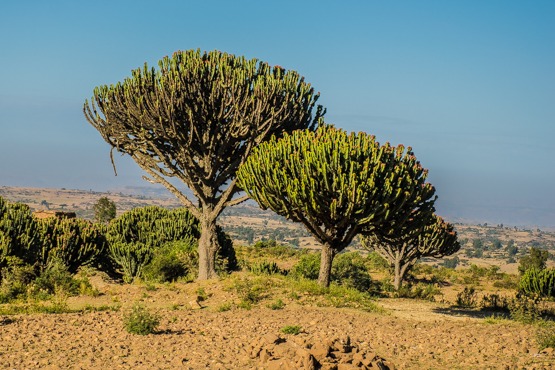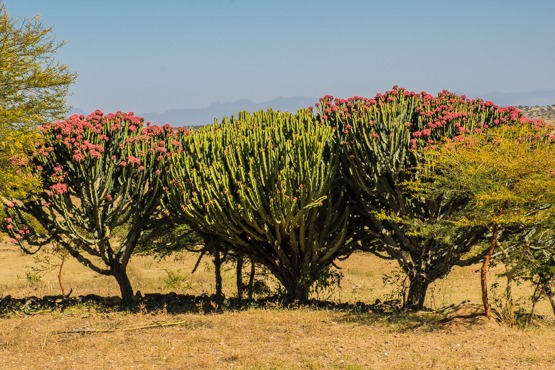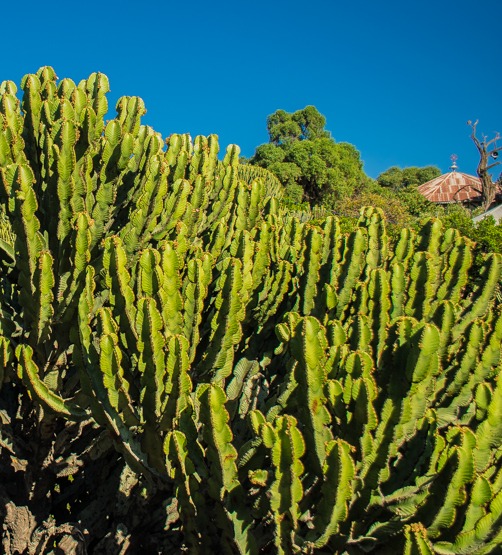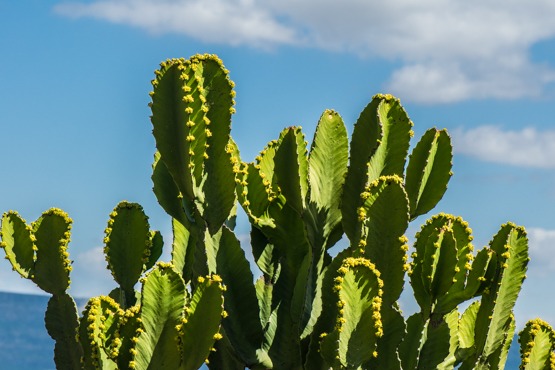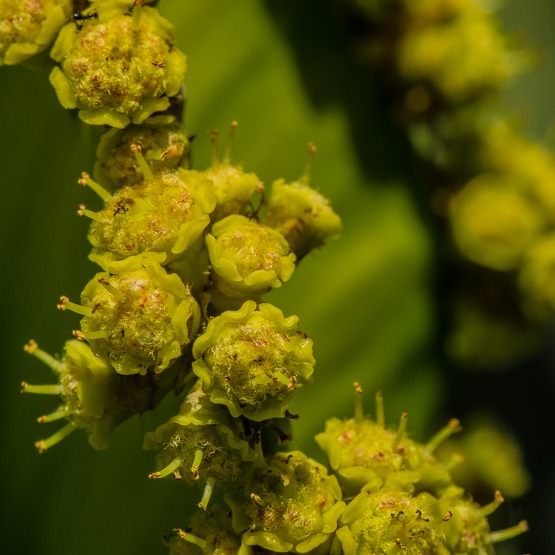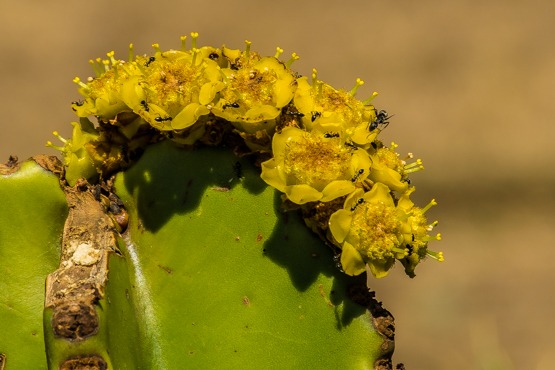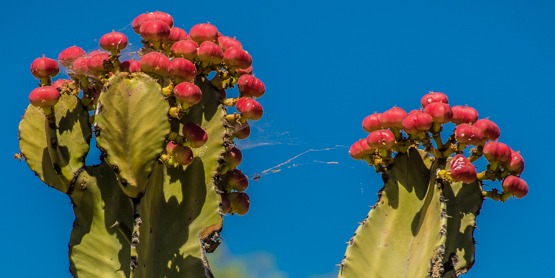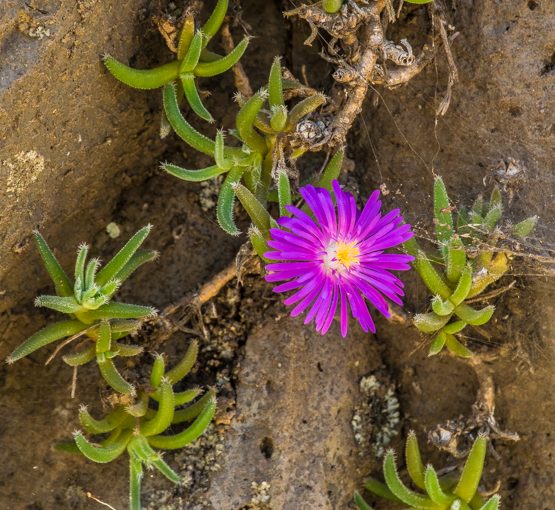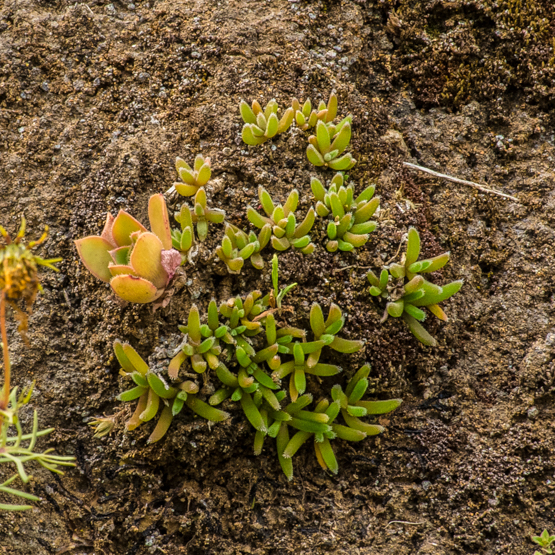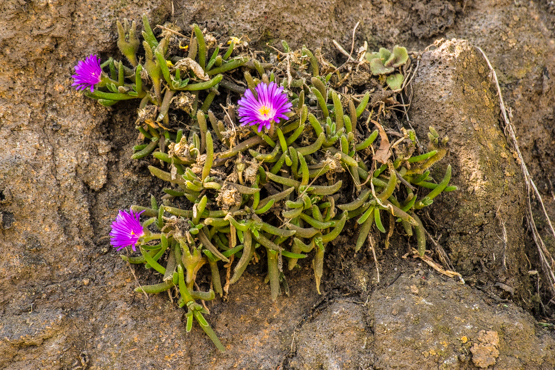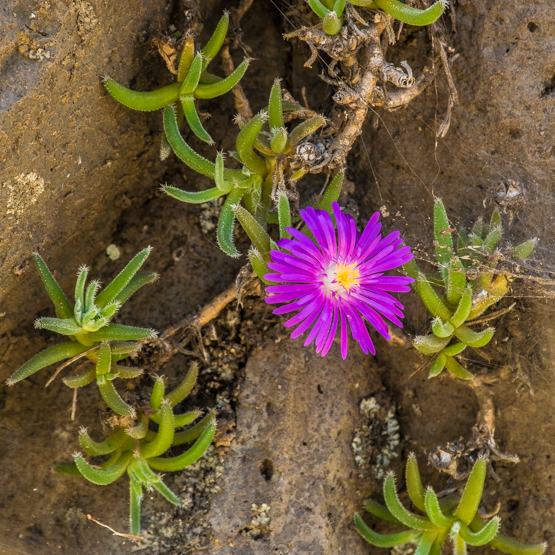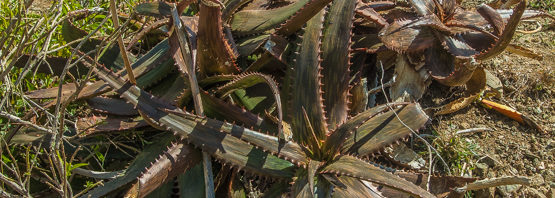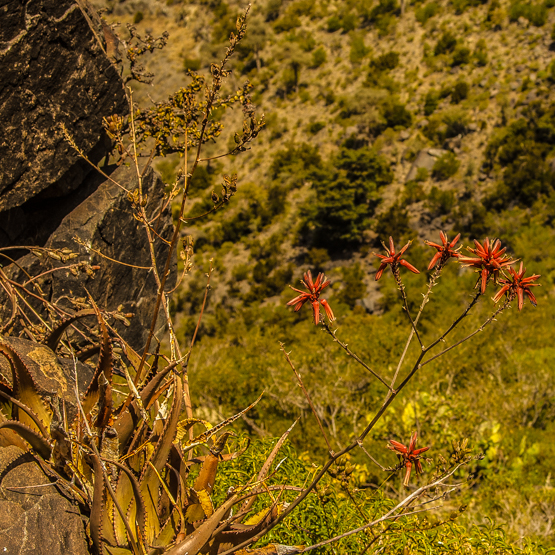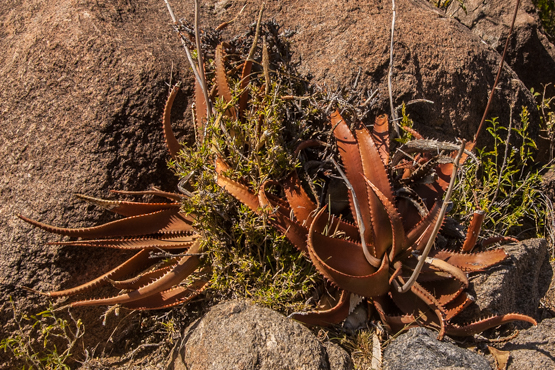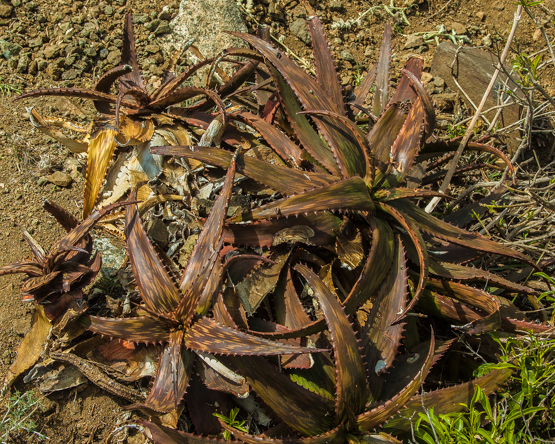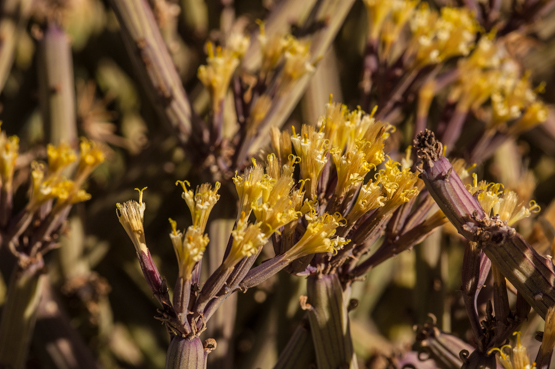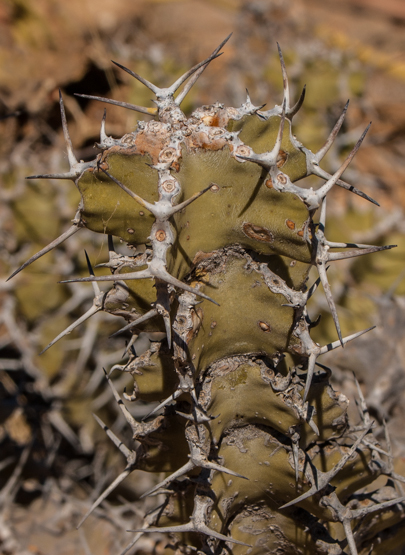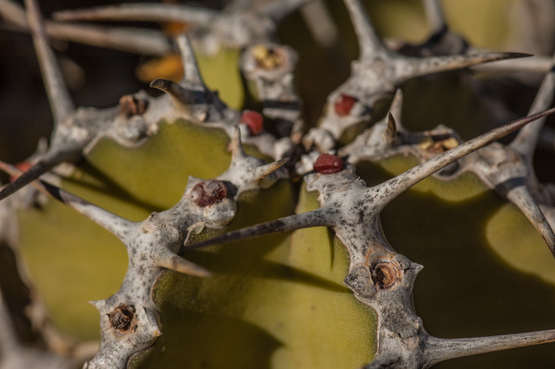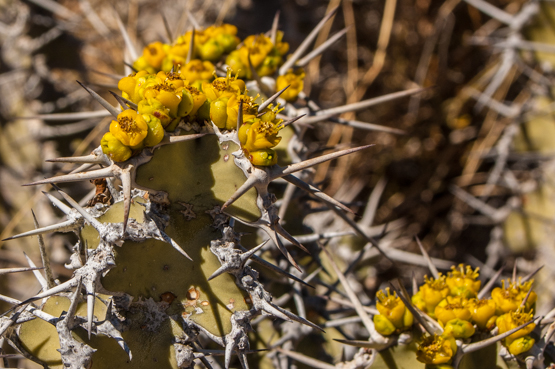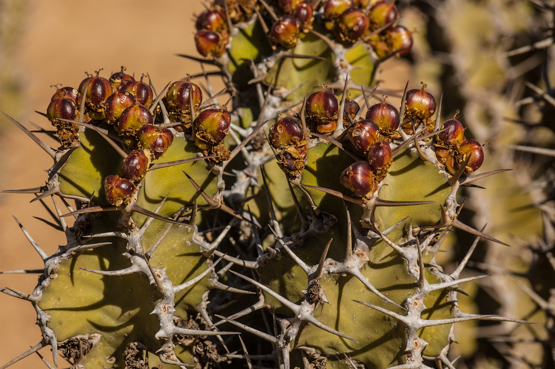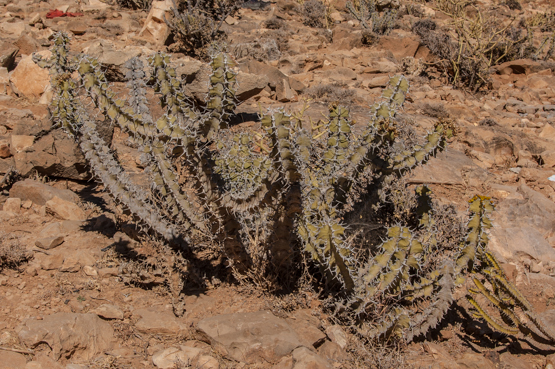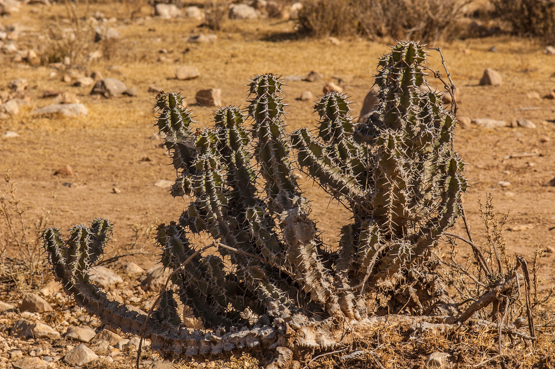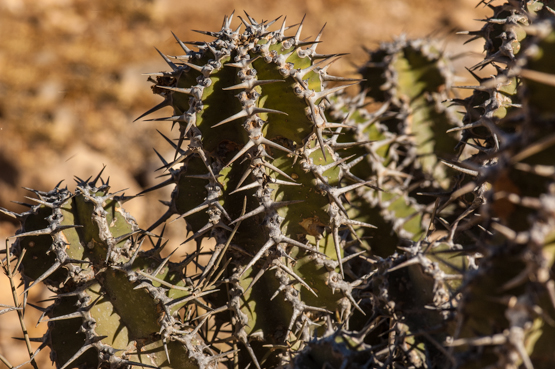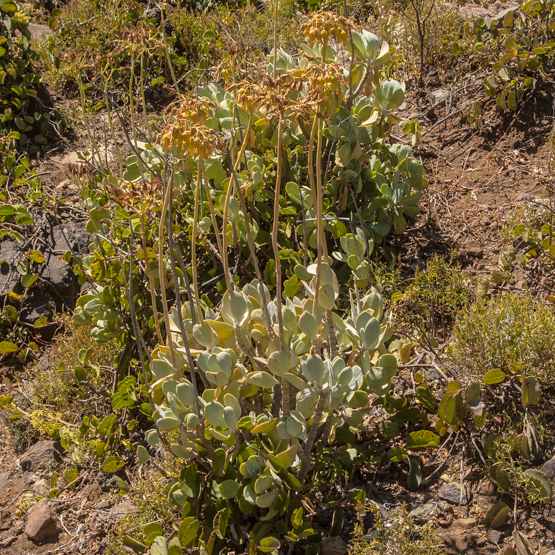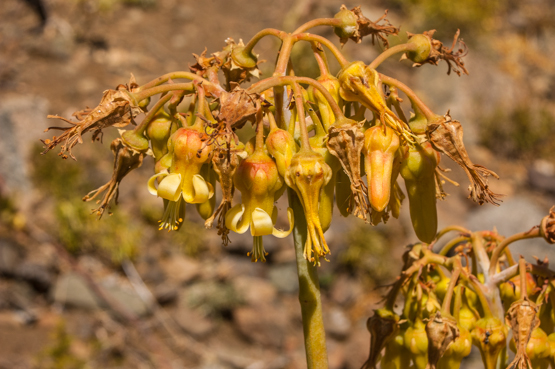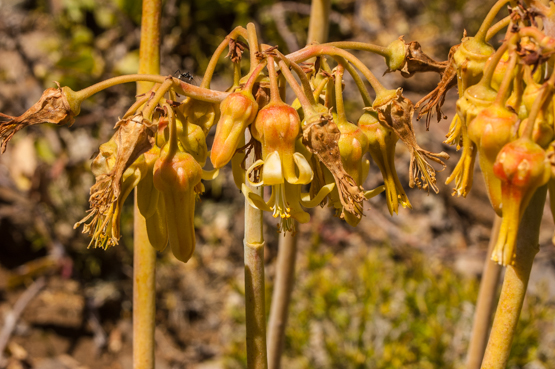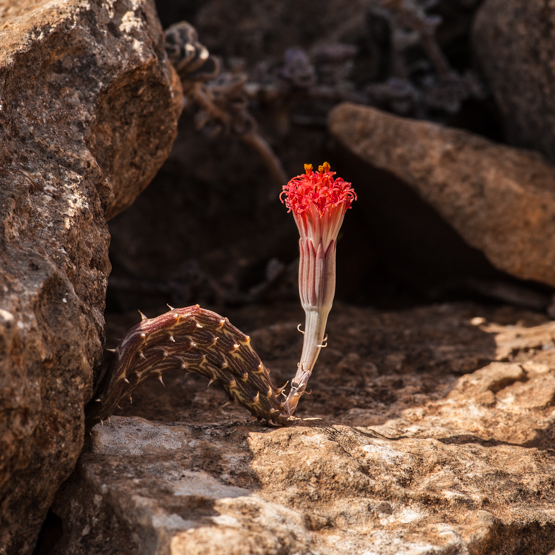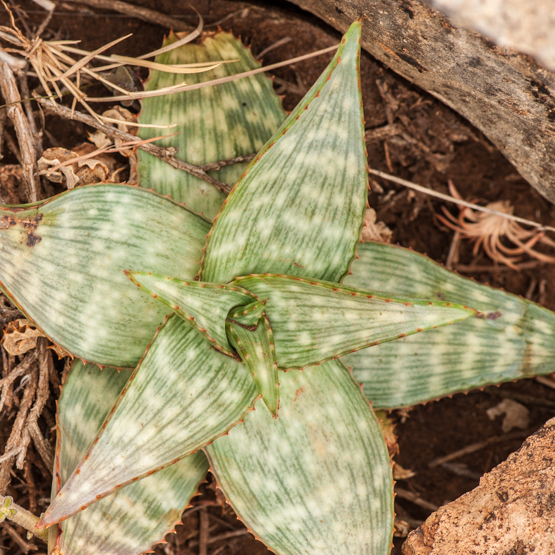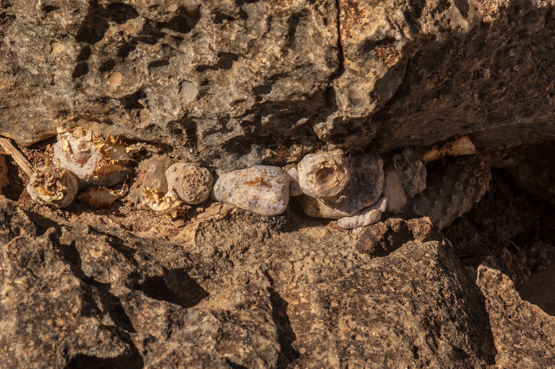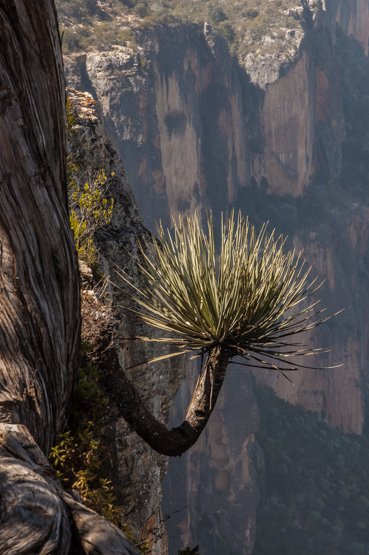Even though this is not the most imposing of the tree Euphorbias, a mature specimen is a sight for sore eyes, especially when it is decorated with its big bright red fruits.
When fully developed, the trees may be 9-10 m tall, with a short bulky trunk and a dense crown of upcurved stems. The tips of the branches are usually 4- angled, 4 to 6 cm wide, and regularly constricted into oval segments to 15 cm long; the angles are straight to shallowly waved.
The spine shields are triangular, to 1 x 0.7 cm; they are separate and become corky with age. The spine pairs are up to 0.5 cm long, often not completely developed or apparently absent.
The cyathia are 1.2 cm across, with golden yellow glands; the fleshy
fruits are about 1.5 x 2 cm, first white, then turning bright red, and hardening over time.
Euphorbia abyssinica occurs at altitudes between 840 and 1460 m in Sudan (Red Sea Hills), Eritrea, N. Ethiopia, Somaliland, and N. Somalia, on dry stony slopes and bushy savannahs, sometimes growing on its own but often locally dominant.
The stem is used for firewood and as timber and the sap is sometimes used in traditional medicine and to kill ticks on cattle.
In suitable climates, the species is grown as an ornamental house plant and also as a garden plant. It is best propagated by seed because cuttings do not develop the characteristic trunk.

